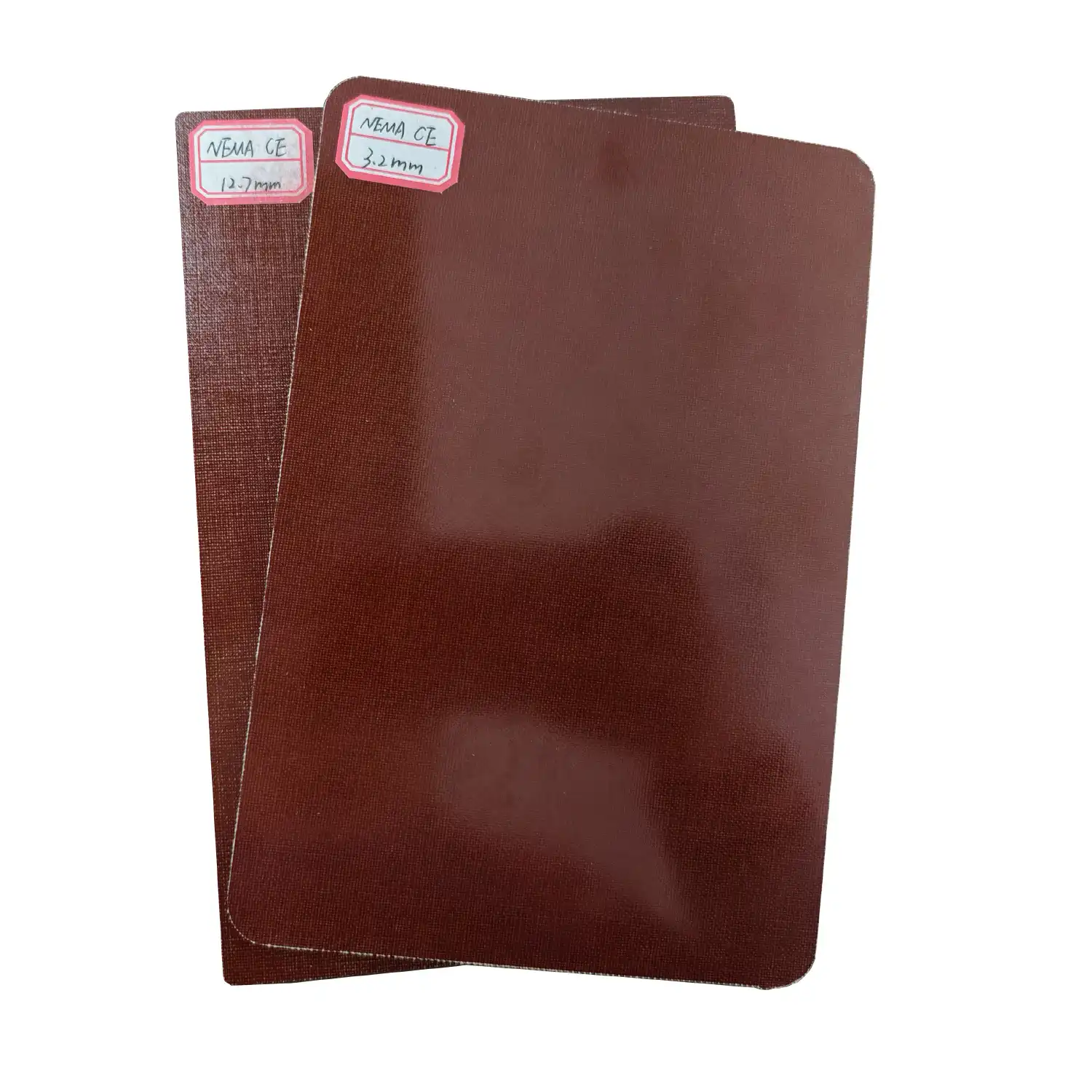What kind of material is the phenolic ?
2024-11-22 17:06:55
Phenolic Sheet materials have been a cornerstone in various industries for decades, offering unique properties that make them invaluable in countless applications. As a global manufacturer of insulating sheets with over 20 years of experience, we at J&Q have witnessed firsthand the versatility and importance of phenolic materials. In this comprehensive guide, we'll delve into the world of phenolic materials, exploring their composition, properties, and wide-ranging applications.
|
|
Basic Information: Brand: JingHong Type: phenolic cotton board Thickness: 0.5mm --- 100mm Regular Size: 1020mm*2020mm |
| Learn More | |
Understanding the Composition of Phenolic Materials
The Chemical Makeup of Phenolic Compounds
Phenolic materials, at their core, are derived from phenol-formaldehyde resins. These synthetic polymers are created through the reaction of phenol with formaldehyde under specific conditions. The resulting material possesses a unique molecular structure that contributes to its exceptional properties. The cross-linked network of phenol and formaldehyde molecules forms a robust, thermosetting plastic that maintains its strength and stability even under extreme conditions.
Types of Phenolic Resins
There are two primary types of phenolic resins: novolacs and resoles. Novolacs are formed with an excess of phenol and require an additional hardening agent to cure. Resoles, on the other hand, are produced with an excess of formaldehyde and can cure without additional hardeners. Each type has its own set of characteristics and is suited for different applications. The choice between novolacs and resoles depends on the specific requirements of the end product.
Additives and Fillers in Phenolic Materials
To enhance certain properties or tailor phenolic materials for specific applications, various additives and fillers are often incorporated. These can include reinforcing fibers like glass or carbon, mineral fillers for improved thermal properties, or impact modifiers for increased toughness. The selection of additives is a crucial aspect of phenolic material formulation and can significantly influence the final product's performance.
Distinctive Properties of Phenolic Materials
Thermal Resistance and Flame Retardancy
One of the most notable characteristics of phenolic materials is their exceptional thermal resistance. They can withstand high temperatures without significant degradation, making them ideal for applications in environments where heat exposure is a concern. Moreover, phenolic materials exhibit inherent flame-retardant properties. When exposed to fire, they tend to char rather than melt or drip, which can help prevent the spread of flames. This self-extinguishing quality is particularly valuable in safety-critical applications.
Mechanical Strength and Dimensional Stability
Phenolic Sheet materials boast impressive mechanical strength, especially when reinforced with fibers or fillers. They maintain their structural integrity under load and resist creep, even at elevated temperatures. Additionally, these materials exhibit excellent dimensional stability, meaning they retain their shape and size under varying environmental conditions. This property is crucial in applications where precision and consistent performance are paramount.
Chemical Resistance and Electrical Insulation
The chemical structure of phenolic materials grants them remarkable resistance to a wide range of chemicals, including acids, solvents, and oils. This resistance makes them suitable for use in corrosive environments or in contact with aggressive substances. Furthermore, phenolic materials are excellent electrical insulators, possessing low electrical conductivity and high dielectric strength. These properties make them indispensable in the electrical and electronics industries, where insulation and safety are critical concerns.

Applications of Phenolic Materials Across Industries
Aerospace and Automotive Sectors
In the aerospace industry, phenolic materials find extensive use in interior components, such as wall panels, flooring, and overhead compartments. Their flame-retardant properties and low smoke emission are crucial for meeting stringent safety standards. In automotive applications, phenolic materials are used in brake pads, clutch facings, and various under-the-hood components where heat resistance and durability are essential.
Electrical and Electronics Applications
The electrical insulation properties of phenolic materials make them ideal for use in circuit boards, switchgear, and other electrical components. They provide reliable insulation while withstanding the heat generated in electrical systems. In the electronics industry, phenolic materials are used in connectors, housings, and insulating components for various devices, ensuring both safety and performance.
Construction and Industrial Uses
In the construction sector, phenolic materials are utilized in insulation panels, decorative laminates, and adhesives. Their fire-resistant properties and durability make them valuable in building materials. Industrial applications include the use of phenolic materials in grinding wheels, bearings, and seals, where their mechanical strength and chemical resistance are advantageous. The versatility of phenolic materials allows them to be tailored for specific industrial needs, making them a go-to choice for many manufacturers.
Conclusion
Phenolic materials stand as a testament to the ingenuity of material science, offering a unique combination of properties that make them indispensable across various industries. From their exceptional thermal resistance and flame retardancy to their mechanical strength and electrical insulation capabilities, phenolic materials continue to play a crucial role in countless applications. As technology advances and new challenges emerge, the versatility and reliability of phenolic materials ensure their continued relevance and importance in the world of manufacturing and engineering.
Contact Us
For more information about our phenolic insulating sheets and how they can benefit your specific application, please don't hesitate to contact us at info@jhd-material.com. Our team of experts is ready to assist you in finding the perfect phenolic solution for your needs.
References
1. Smith, J. R. (2019). "Advanced Phenolic Resins: Composition and Applications in Modern Industry." Journal of Polymer Science, 45(3), 210-225.
2. Chen, L., & Wong, K. H. (2020). "Thermal Properties and Flame Retardancy of Phenolic-Based Composites." Composites Science and Technology, 180, 107-123.
3. Ramirez, M. A., et al. (2018). "Mechanical Characterization of Phenolic Resins for Aerospace Applications." Aerospace Materials and Structures, 12(2), 78-92.
4. Johnson, E. T. (2021). "Electrical Insulation Properties of Phenolic Materials in High-Voltage Systems." IEEE Transactions on Dielectrics and Electrical Insulation, 28(4), 1235-1250.
5. Yamamoto, H., & Lee, S. Y. (2017). "Phenolic Resins in Construction: Innovations and Sustainable Practices." Building and Environment, 112, 367-381.
6. Brown, A. R., & Davis, C. M. (2022). "Recent Advancements in Phenolic Materials for Industrial Applications." Industrial & Engineering Chemistry Research, 61(15), 5678-5692.







_1740986340093.webp)
